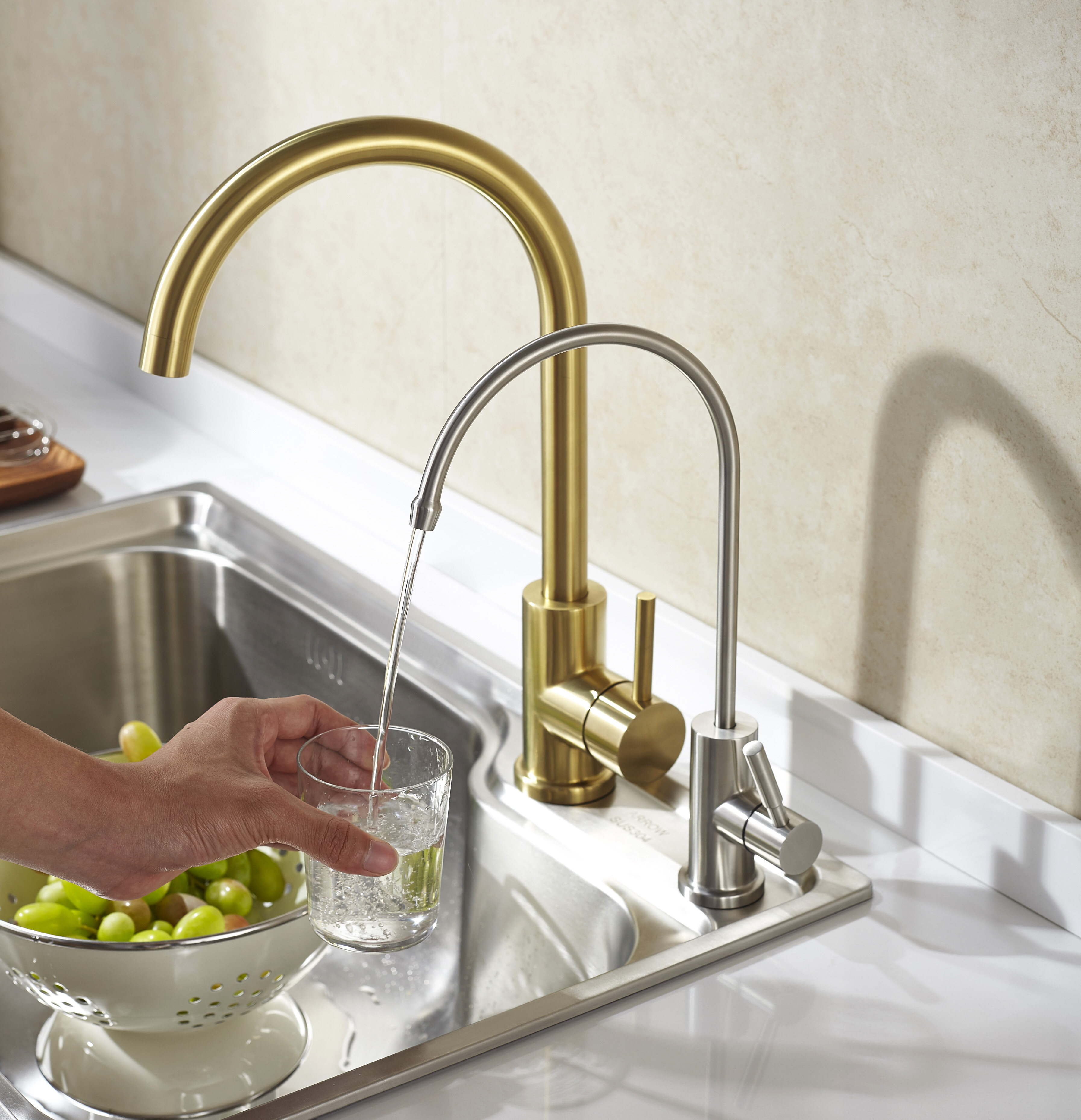Email format error
Email cannot be empty
Email already exists
6-20 characters(letters plus numbers only)
The password is inconsistent
Email format error
Email cannot be empty
Email does not exist
6-20 characters(letters plus numbers only)
The password is inconsistent


When it comes to choosing a faucet for your kitchen or bathroom, the material it is made of plays a significant role in both aesthetics and functionality. In this comparison blog, we will explore and compare different types of faucets, including stainless steel, chrome, brass, and nickel. We will highlight the pros and cons of each material, providing insights into which type of faucet may be best suited for different preferences and needs.
Stainless Steel Faucets
Pros:
Durability: Stainless steel faucets are known for their durability and resistance to corrosion, rust, and tarnishing.
Easy to Clean: Stainless steel is easy to clean and maintain, making it a popular choice for busy households.
Modern Aesthetic: Stainless steel faucets have a sleek and modern appearance that can complement a variety of kitchen and bathroom styles.
Cons:
Cost: Stainless steel faucets can be more expensive than other materials such as chrome or brass.
Scratch Prone: While durable, stainless steel faucets can be prone to scratching, which may affect their appearance over time.
Best Suited For: Modern and contemporary kitchen and bathroom designs where durability and a sleek aesthetic are desired.
Chrome Faucets
Pros:
Affordability: Chrome faucets are typically more affordable than other materials, making them a budget-friendly option.
Shine and Luster: Chrome faucets have a shiny and reflective surface that can add a touch of elegance to any space.
Easy to Match: Chrome finishes are versatile and easy to match with other fixtures and accessories in the room.
Cons:
Durability: Chrome finishes can be prone to scratching and tarnishing over time, requiring regular maintenance to keep them looking their best.
Limited Styles: Chrome faucets may have limited style options compared to other materials.
Best Suited For: Budget-conscious homeowners looking for a versatile and shiny finish for their kitchen or bathroom.
Brass Faucets
Pros:
Timeless Elegance: Brass faucets have a timeless and elegant appearance that can add a touch of luxury to any space.
Durability: Brass is a durable material that can withstand daily use and maintain its appearance over time.
Variety of Finishes: Brass faucets come in a variety of finishes, from polished to antique, allowing for customization.
Cons:
Maintenance: Brass faucets may require regular polishing to maintain their shine and prevent tarnishing.
Cost: Brass faucets can be more expensive than other materials, depending on the finish and style.
Best Suited For: Traditional and vintage-inspired kitchen and bathroom designs where a touch of elegance is desired.
Nickel Faucets
Pros:
Versatility: Nickel faucets come in a variety of finishes, including brushed and polished, offering versatility in design options.
Durability: Nickel is a durable material that is resistant to corrosion and tarnishing, making it a long-lasting choice.
Easy to Clean: Nickel finishes are easy to clean and maintain, requiring minimal effort to keep them looking their best.
Cons:
Cost: Nickel faucets can be more expensive than chrome but are generally more affordable than brass or stainless steel.
Limited Styles: Nickel finishes may have limited style options compared to other materials.
Best Suited For: Contemporary and transitional kitchen and bathroom designs where versatility and durability are important factors.
Conclusion
In conclusion, each type of faucet material - stainless steel, chrome, brass, and nickel - has its own set of pros and cons that make it suitable for different preferences and needs. Stainless steel faucets are durable and modern, chrome faucets are affordable and shiny, brass faucets are timeless and elegant, and nickel faucets are versatile and durable. When choosing a faucet for your kitchen or bathroom, consider factors such as durability, maintenance, cost, and design style to determine which material is best suited for your space. Ultimately, the choice of faucet material should reflect your personal style and functional requirements to create a cohesive and stylish look in your home.